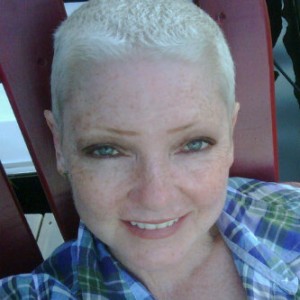 Carrie Handley, a mobile health and health IT consultant in Waterloo, Ontario, knew that healthcare was an inefficient industry with plenty of communications shortfalls. But she didn't realize how pervasive and frustrating the problem was until she was diagnosed with breast cancer two years ago.
Carrie Handley, a mobile health and health IT consultant in Waterloo, Ontario, knew that healthcare was an inefficient industry with plenty of communications shortfalls. But she didn't realize how pervasive and frustrating the problem was until she was diagnosed with breast cancer two years ago.
In fact, Handley, a former marketing executive with several medical imaging companies, was initially misdiagnosed in April 2010 because of an error in communicating the results of the mammogram.
"The nurse who read [the results] over the phone to me didn't read the entire report and said that it was negative, and so I went on my merry way," Handley tells MobiHealthNews. Several weeks later, the hospital that did the exam called, wondering why she hadn't returned for a follow-up appointment. "It was indeed not negative, it was positive," Handley recalls.
After getting a late start on the treatment, Handley needed three successive surgeries.
"I got angry. I wasn't going to become a victim or a helpless patient," she says. But she channeled the anger into something positive. I thought, 'You know what, I'm going to get all of my images and all of my reports because I want to understand what's going on. I don't want to have this to happen to me again through this process.'" Handley went to all of the facilities she had received care at and got copies of all her records – a few CDs with images, but mostly paper documents.
"Originally it started off in a binder, which, as you can imagine, became very heavy and cumbersome and awkward to carry around," Handley says. After months of dragging the binder from appointment to appointment, she went mobile, digitizing all the information and storing it on a USB drive.
"That seemed to be a really smart thing to do because it was tiny. Well, that proved to be illogical because it was easy to lose and nobody really knew what to do with it once they had it in their hands," Handley says, echoing the experience of many who have tried USB-based personal health records.
At one point, a physician put the USB drive in his lab coat, which then probably wound up in a laundry bin. "As I was being wheeled into surgery, I thought, well, that was really dumb of me," Handley recalls. After she got home, she first put the records on a laptop, then her son came over with an iPad. She found the right container, one that was both portable and made the information easy to share with her doctors and nurses.
"By having all of that information, you become so informed and you can have a better relationship with your clinician. Yes, at first, it's a bit difficult. They are very wary of how much information you have and if it's even correct," Handley says.
She overcame this problem early on by having caregivers verify that the information in the binder matched what was in their records. "They had some semblance of comfort that I knew what I was talking about," Handley says. "At any one time, I typically had more information because they were limited by what information they could pull from the medical record or what they could pull up on their IT systems."
Even when she was still lugging around the binder, more than a few clinicians were surprised when Handley showed up with more information than they had about her. Then those emotions went from surprise to wariness to resentment to despair, and finally to acceptance, essentially following the Kubler-Ross five stages of grief. "[Clinicians] were frustrated themselves in many instances, especially the younger ones," Handley reports. "They would love so much to have this technology at their fingertips."
To Handley, mobile is the "the single greatest disruptive technology since when the Internet was introduced and revolutionized how business was being done," and it is exactly what healthcare needs. "This is the first time ever that we've had a technology that's been so pervasive in personal use that it's a bottom-up, grass-roots movement, in my opinion," she says. "I think that mobile is going to revolutionize how healthcare is being done because patients are becoming much more savvy."
But the revolution certainly is not complete. Even though Manhattan Research says that 62 percent of physicians in the U.S. now use tablets – mostly iPads – the hot-selling Apple product has its limitations. For example, a multi-page pathology report might not translate well to the iPad's 9.7-inch screen. "The screen is somewhat challenging for people to get used to," Handley notes.
What the rapid acceptance of mobile devices is doing, however, is forcing health IT vendors and CIOs to reevaluate their strategies and, in some cases, bloated, decades-old architecture. "I think this is an excellent opportunity to take those current systems and streamline them," Handley says. "I think that mobile offers an incredible opportunity for rethinking many of the UIs that are out there."
It also might finally enable the patient-empowerment movement to have a widespread effect on entrenched systems, processes and ideas that need to be shaken up.
"The idea [of empowerment] is that people can understand what are the tools around them that can use so that they are prepared every time that they go in for that appointment or for that test or for that assessment," Handley says. "There are tools out there, and more and more people are beginning to use them to understand that their phone or their iPad or their PlayBook can always be a part of their healthcare experience."
















